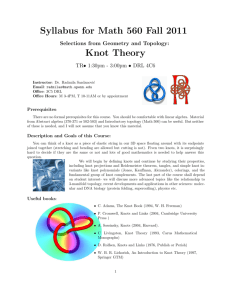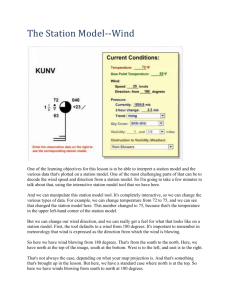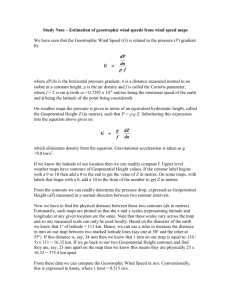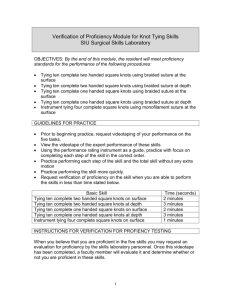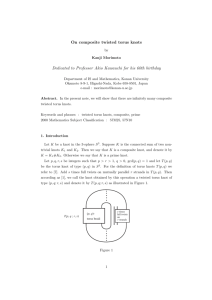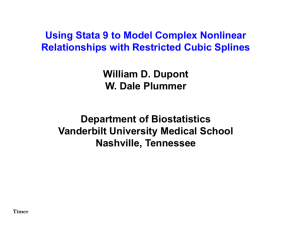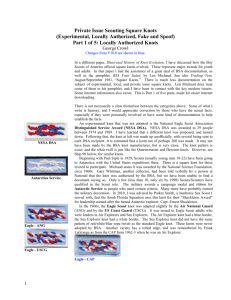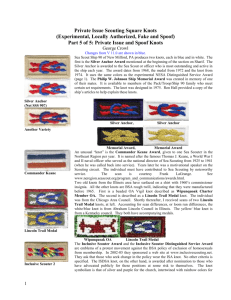Chapter 7 Knots establishe genetic stability
advertisement
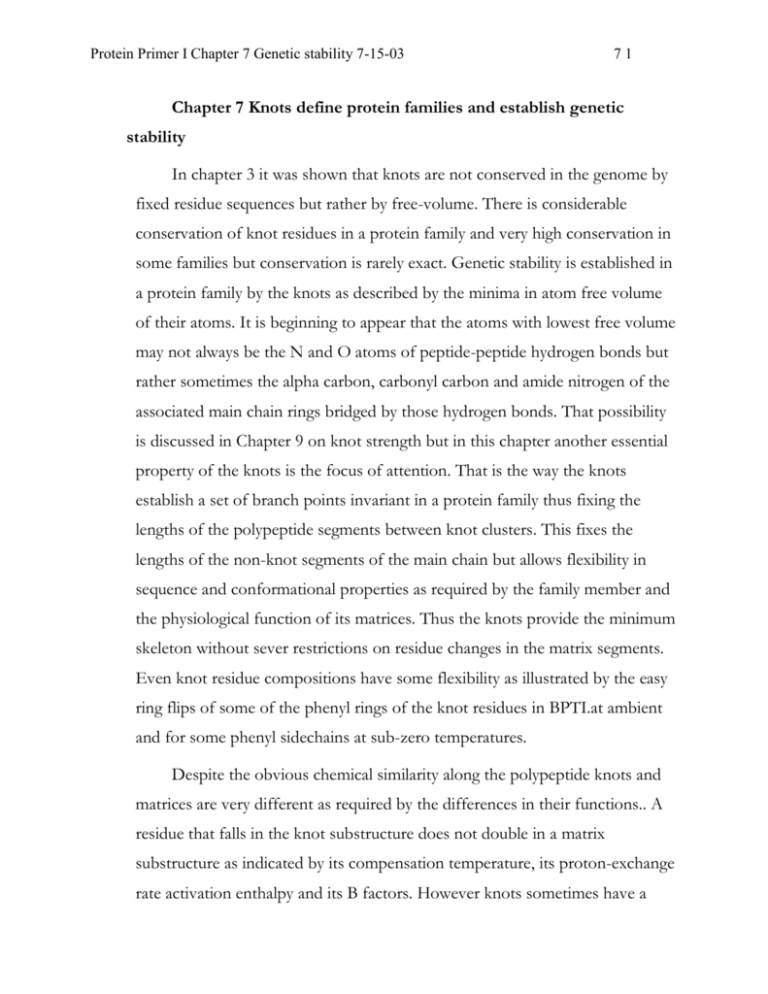
Protein Primer I Chapter 7 Genetic stability 7-15-03 71 Chapter 7 Knots define protein families and establish genetic stability In chapter 3 it was shown that knots are not conserved in the genome by fixed residue sequences but rather by free-volume. There is considerable conservation of knot residues in a protein family and very high conservation in some families but conservation is rarely exact. Genetic stability is established in a protein family by the knots as described by the minima in atom free volume of their atoms. It is beginning to appear that the atoms with lowest free volume may not always be the N and O atoms of peptide-peptide hydrogen bonds but rather sometimes the alpha carbon, carbonyl carbon and amide nitrogen of the associated main chain rings bridged by those hydrogen bonds. That possibility is discussed in Chapter 9 on knot strength but in this chapter another essential property of the knots is the focus of attention. That is the way the knots establish a set of branch points invariant in a protein family thus fixing the lengths of the polypeptide segments between knot clusters. This fixes the lengths of the non-knot segments of the main chain but allows flexibility in sequence and conformational properties as required by the family member and the physiological function of its matrices. Thus the knots provide the minimum skeleton without sever restrictions on residue changes in the matrix segments. Even knot residue compositions have some flexibility as illustrated by the easy ring flips of some of the phenyl rings of the knot residues in BPTI.at ambient and for some phenyl sidechains at sub-zero temperatures. Despite the obvious chemical similarity along the polypeptide knots and matrices are very different as required by the differences in their functions.. A residue that falls in the knot substructure does not double in a matrix substructure as indicated by its compensation temperature, its proton-exchange rate activation enthalpy and its B factors. However knots sometimes have a Protein Primer I Chapter 7 Genetic stability 7-15-03 72 small dynamical involvement with matrices as illustrated by the substrateanalog boronic-acid derivatives of α-lyctic protease found in our analysis of the B factors from Stroud et al. Similarly although the knots define a protein family, the dividing line in this respect may not always clearly separate knots from matrices. Subtilisin elastase, trypsin, papain and α-lyctic protease have a few differences in knot residues but the same triad of functional residues, the Asp Ser, His set, famous in simplistic attempts to explain catalytic function on contact residues alone. Protease K is a recent evolved member of the ancient subtilisin family and indeed their knots are very similar in chain positions if not residue conservation. Although the basic set of construction features is the same, there are small differences in positions of two of the knot H bond clusters suggesting genetic drift from an early member of the family to a newer one. The relatively minor knot differences do suggest that proteins drift into place one from others rather than following independent paths to the present. These alternatives can be expected to produce major differences in their matrices and that is where evolutionary biologists will now have to look. Hinges, salt bridges, positions of salt bridges if any, side-chain H bonds and so on help to round out the explanation for the similarity and differences in evolution. In this connection recall that each enzyme in construction and function apparently reflects some contribution from every one of its residues although the differences are quantitative and vary. Proteins are gestalt productions in that sense but with considerable latitude since, for example, the same qualitative features can be produced by nearly identical distributions of atom free volumes achieved with different residue compositions. The ubiquitous features tabulated in the chapter on enzyme structure are gestalt features of enzymes as opposed to familial similarities and finally to specific functions. The latter are often gestalt but many differences between proteins in the same Protein Primer I Chapter 7 Genetic stability 7-15-03 73 family are not gestalt although they are manifestations of the construction of the whole protein. A relevant case in point is the comparison between trypsin and chymotrypsin. As we define protein families in terms of the similarity of knots, these are both members of the trypsin family. Their knots are identical in terms of the positions of the lowest B factors but there are small deviations from exact residue conservation. But trypsin is most effective at acid conditions and chymotrypsin has an isoionic pH of 8.5, an effect at least partially attributable to a charged group in the sidechain “pocket” of trypsin. Pepsin is a better illustration because rhizopepsin, also active at low pH, has many aspartate residues located just at the water-protein interface in pairs that match the knot palindrome. There are just enough loops to accommodate these residues in this way and they are all positioned so that the charges lie just inside the first hydration layer. This construction provides an almost spherically symmetric shell of charge that does not distort the symmetry of the matrix contraction in catalytic function. Some other pepsins have glutamate residues in place of some of the rhizopepsin aspartates and the family description of these pepsins includes this kind of charge shell as a gestalt feature even though the aspartates and glutamates may not be entirely interchangeable. More detailed examination of such charge distributions may show that this surface lysine residues are sometimes included to maintain the necessary symmetry in the charge cloud. A figure for the charge and knot palindromes of rhizopepsin is given in Protein-solvent interactions, chapter 1, (ed. R. Gregory for Dekker 1994) Because of the matched pair of catalytic functional domains, enzymes and other proteins constructed to have matched pairs have a single hinge. Howevewr the hinges can be very different. Most proteinases and esterases depends on continuity of the main chain. Ribonuclease A, the pyridoxyphosphate enzymes and phospholipase A2 have several interdomain disulfide Protein Primer I Chapter 7 Genetic stability 7-15-03 74 bonds as does the non-enzymic G protein from streptococcus.. Small groups so H bonds formed between side-chain acid and base groups and between the domain pairs is sometimes found and are clusters of metal ions. The latter usually lie in their own domain apparently added as a hinge an illustration of the progression to large and larger assemblies by addition of new functional domains. The hinge domains are or appear to be autonomous functional domains and the progression from simple hinge to independent functional domain does not seem to require a new concept. Other necessary features such as hinges may vary within a family and their study in terms of the B-factor distribution will reveal finer details of matrix construction particularly as that construction modulates contraction and catalysis. The hinge in the HIV-1 protease consists or a short knot formed from Nterminal residues assembled into an antiparallel-β sheet. (Shown in Fig.@). This small structure may not be strong enough to maintain necessary association of the catalytic domains during catalysis and diffraction data show a matched pair of sequences at the other end of the associated functional domains that associate in the presence of a bound polypeptides substrate. This is the only example we have found but similar or identical latches may be quite common. (see Fig. @) Variations in the construction of the devices supporting pairing, dynamic balance, nutcracker potential-energy transfer by different constructions indicate a large amount of independence in protein evolution ranking in complexity with the behavior of the cosmos..



